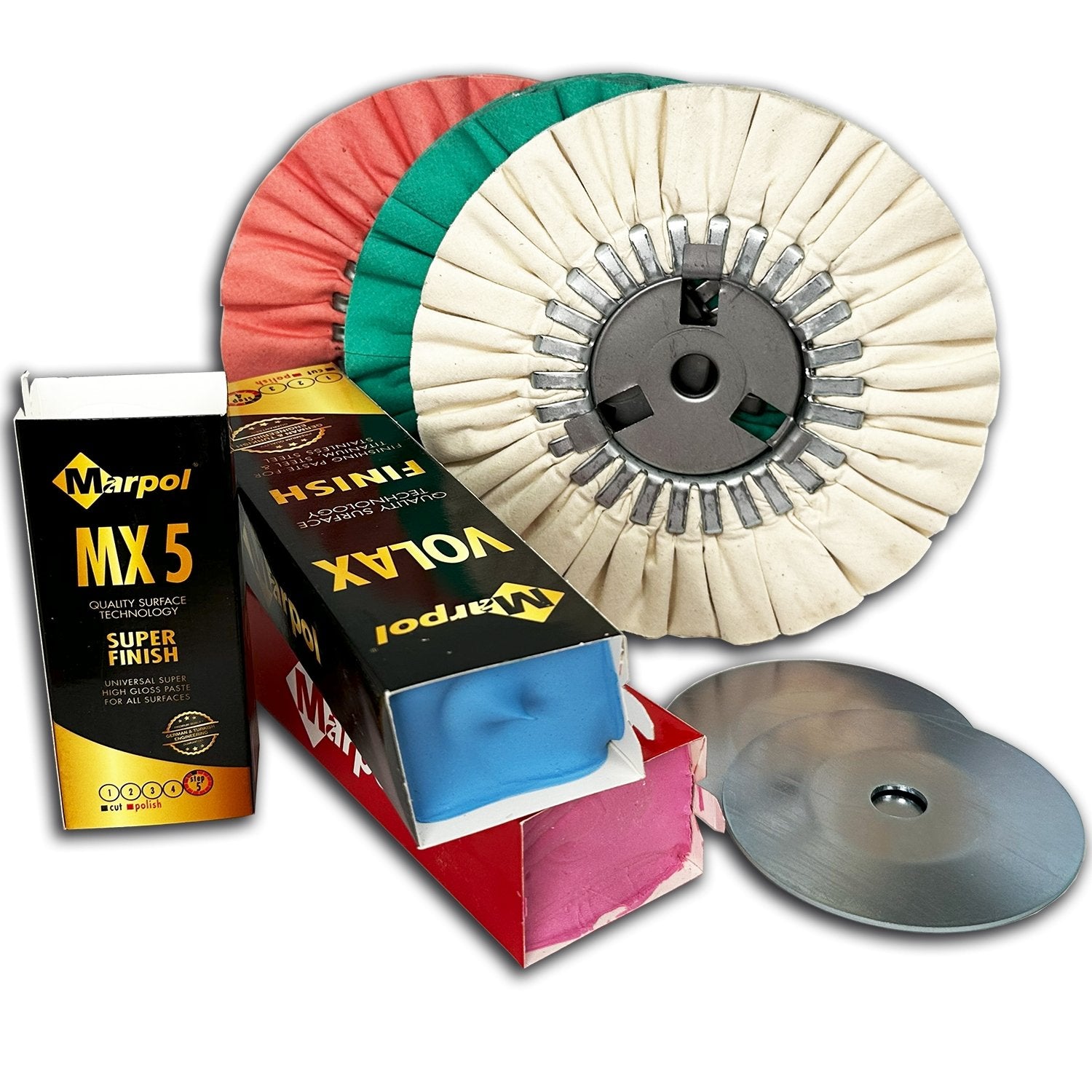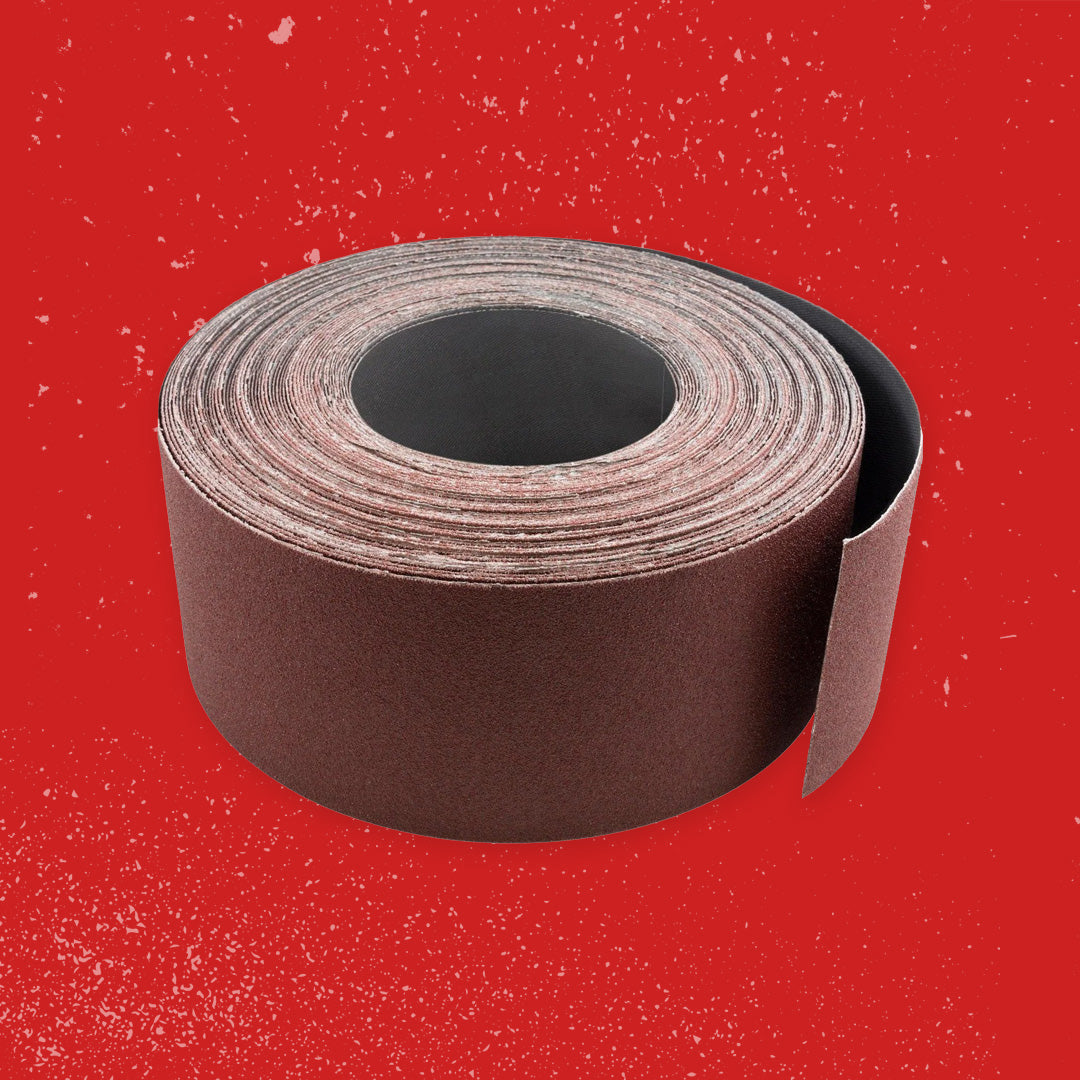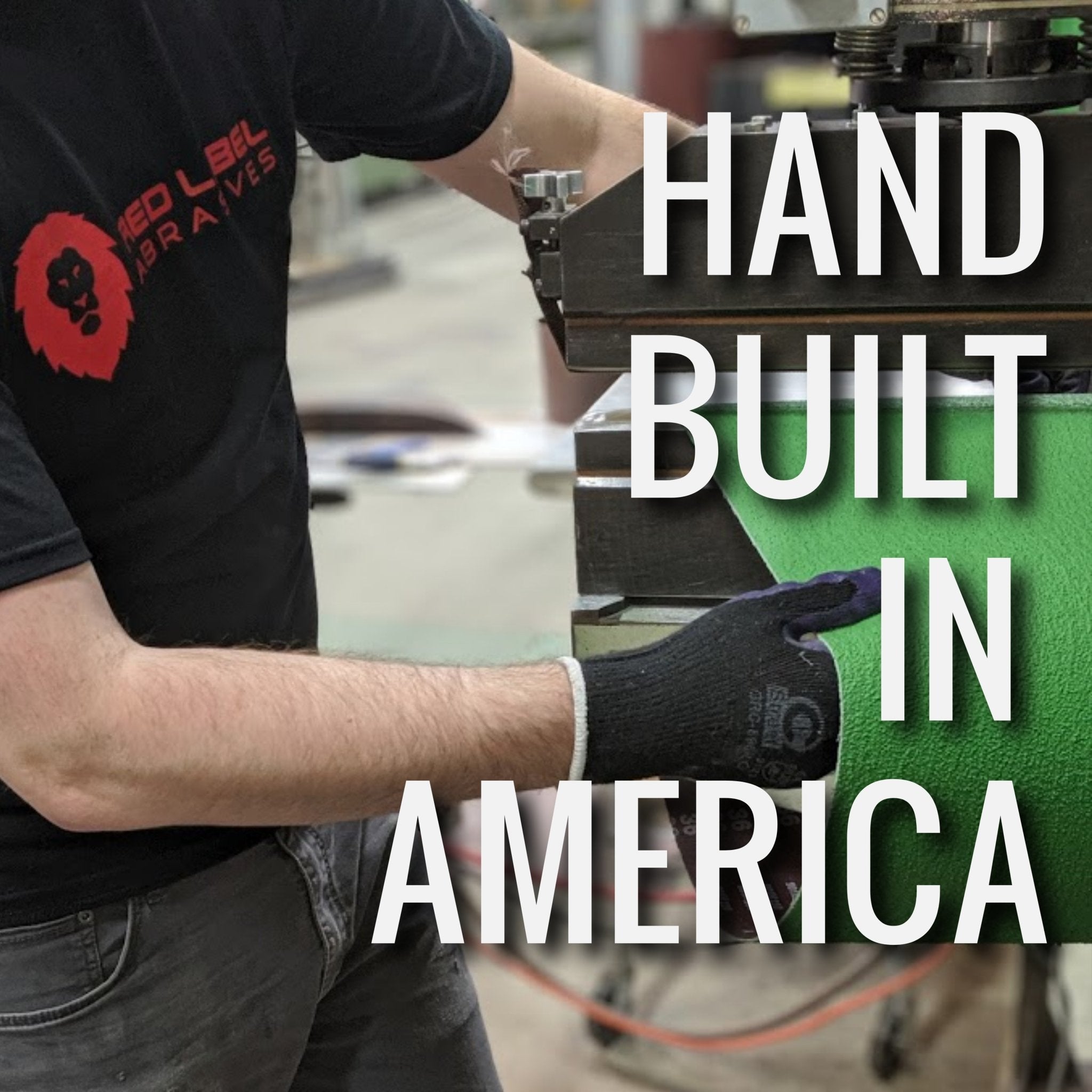Your Cart is Empty
Free Shipping over $150 (Excludes Oversized Products) | Office Closed 12/24-26 & 12/31-1/2
Free Shipping over $150 (Excludes Oversized Products) | Office Closed 12/24-26 & 12/31-1/2
Sanding Belts
Sanding Discs

How to Choose the Right Sanding Grit Progression
by David Kranker 5 min read

Quick Summary
Generally speaking, you’ll want to use coarse grits (P8 - P80) for stock removal and the stripping of paints and varnishes. You’ll then want to use medium grits (P100 - P220) for prepping and shaping materials followed by fine grits (P240+) for sharpening and polishing.
Topics Covered
- Grit sizes explained
- What does a good grit sequence look like?
- How to choose the right sequence
- Contact an abrasive specialist
During a sanding project, choosing the right grit sequence is critical. You want to start with a rougher abrasive that eliminates all stock and finish, followed by successively finer grits that clear away sanding marks until a smooth finish results. Any deviations can compromise the quality of the finished workpiece, so the team at Red Label Abrasives has put together this sanding grit guide to support the success of your sanding efforts.
Grit sizes explained
Coated abrasives like sanding belts, sanding discs, sanding rolls, and sanding sheets have a range of grain sizes. At Red Label Abrasives, our products use the Federation of European Producers of Abrasives (FEPA) standard, which means that our sandpaper grits are signified by the letter P and a number, such as P80 or P240. The lowest numbers denote the coarsest grains while finer ones have a high number.
The number of grit sizes that you’ll need to keep in stock will depend on what you work on. Are you a hobbyist or professional knifemaker? Do you make rough, handcrafted furniture or try to get sheet metal as smooth as glass? Red Label Abrasives can advise you on which grits you should have on hand for best results.
What does a good grit progression look like?
If your process starts with rough sanding and ends with a flawless finish, you should never bypass more than one grit. For example, if you use a P80 to strip away caked-on, layered paint and follow it with a P180 instead of P120 or 150, the marks from the paint removal won’t totally be removed. You’ll end up oversanding and create an uneven finish or sanding swirls.
Why does this happen? When you start with the coarsest grit, you apply deep scratches on the workpiece surface. By using a correct grit sequence, you gradually even out the scratches. When you skip more than one grit, the higher grits only cut the tops of the scratch peaks, leading to an uneven pattern and blotching.
There's no single ideal grit sequence. The best grit sequence for your application is going to depend on the type of finish you're trying to produce and the material you're sanding. Still, we've taken the time to outline common grit sequences for both wood and metal.
Common Wood Sanding Grit Progression
When you're sanding wood, you typically won't start any lower than 80 grit. Usually, 60 grit is the lowest grit experienced makers will use on wood and that's only if the piece has gouges, splinters, loose fibers, or dips. A popular grit progression for wood is 80 grit followed by 120 grit, 150 grit, 180 grit, and 220 grit.
Common Metal Sanding Grit Progression
Makers that sand metal often follow a similar grit progression to the makers that sand wood. Since metal is a harder material, you can use coarser grains as part of your sanding process. There are makers that will start with a coarse grit as low as 40 grit for sanding metal that is pitted or rusty. A popular grit progression for sanding metal is 60 grit followed by 120 grit, 220 grit, and 320 grit.
How to choose the right sequence
When determining the right grit sequence for your application, confirm what you want to achieve. How much material needs to be removed from the workpiece? What material are you working with? (For example, metal vs. a soft wood like pine.) Does the finish need to be glass-smooth or are you looking for a more textured effect?
Below is an overview of common grit numbers and their recommended applications:
- P40-P60: For stripping finishes and paints, smoothing rough pieces of lumber, removing stock from thicker pieces of metal, or removing knots or bumps in wood pieces.
- P80: This is the recommended starting grit for working with hardwoods. It also does an effective job of removing shallow scratches from metal surfaces.
- P120: Recommended starting grit for softwood sanding.
- P180: Smoothing surface irregularities and raised wood grains.
- P220: Appropriate for wood stain preparation or commencing surface finishing.
- P320: Wet sanding or sanding between coats. (Be sure to use an abrasive that’s compatible with wet applications.)
- P400: This grit does a good job of preparing a surface for finishing oils or smoothing top coats. It is also used as a finishing grit for many materials.
- P600 and up: Any grit above the 600 range is recommended for plastics and metals, fine wet sanding, or preparing a surface for polishing. Abrasives scratch metal far easier than they scratch wood. Scratch marks also aren’t as easy to remove from metal as they are from wood. Therefore, fine to ultra-fine grits from 600 to 1,200 are most useful when polishing metal.
Sandpaper Grit Chart
The information above has also been condensed in the chart below for our comprehensive Abrasives 101 guide.
|
Category |
Grit Range |
Uses |
|
Coarse |
P8 - P80 |
|
|
Medium |
P100 - P220 |
|
|
Fine |
P240 + |
|
Abrasive Grain Type
Selecting the right grain material is just as important as creating an appropriate sequence. At Red Label Abrasives, we supply the following abrasive materials:
- Aluminum oxide: One of the most popular and affordable options, aluminum oxide is highly friable, meaning that it fragments during use to provide a consistently sharp cutting edge. If you strip and finish wood or want to grind metals, there are open and closed coat versions for your application.
- Silicon carbide: This specialty abrasive is frequently used for finish work because of its consistent cut rate. Its ability to sand material without a lot of heat buildup makes it an ideal option for finishing heat-sensitive applications like resinous wood.
- Ceramic: A premium abrasive grain, ceramic has the longest lifespan of any abrasive material. It cuts energetically through hard woods and metal, its high friability delivering a consistently sharp cutting surface.
- Zirconia: Before ceramic was used, zirconia was the go-to abrasive for durable and aggressive cutting performance. It is still a recommended option for stripping hardwoods and metal grinding and polishing.
Contact an Abrasive Specialist
Choosing the right grit sequence (and the right grit) is essential to a successful outcome. The basic guidelines in this blog can get you started, but if you are new to working with certain materials or have questions about how to get the best result for a particular application, Red Label Abrasives is here to help and provide you with the abrasive knowledge and materials you need.
All of our abrasives are custom-manufactured for premium quality without the premium price. We are a family-owned manufacturer and take great pride in offering exceptional customer support with unrivaled technical support. You can reach out to us anytime by calling (844) 824-1956 or filling out a contact form.
ABOUT THE AUTHOR
David Kranker is a writer and creative maker who has been covering the abrasive industry on the Red Label Abrasives Blog since 2020. David spends his time continually researching sanding techniques to provide readers with the latest and greatest information. In his free time, David utilizes abrasives for many different home and auto projects at his home in Delton, MI.
Our Most Popular Abrasives

EdgeCore Ceramic Sanding Belts

EdgeCore Ceramic Flap Discs

Buffing Kit
Shop By Product Category





Why Choose Red Label?







